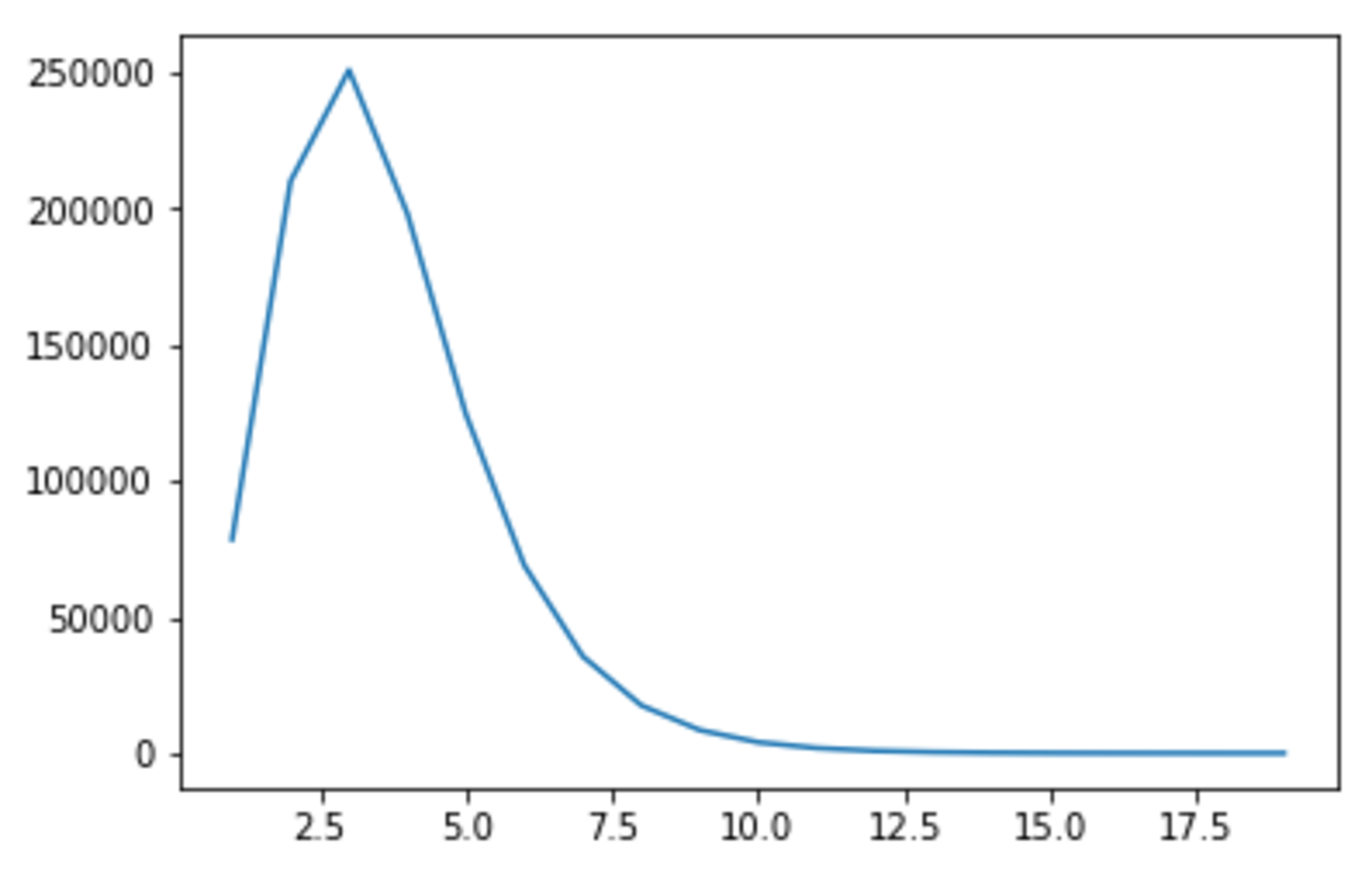Most common number of prime factors
I wrote some Python code to check what the most common number of prime factors is for all numbers between and (it took a while!). For example, has two prime factors, and , and has four: , , , and . Here's what I got:

(Please forgive the odd x-axis scale. I forgot to set this before I ran the program.)
At first I checked numbers between and , and then and , and when I did this, it appeared that it was most common for a number to have prime factors. But as I increased the upper bound, prime factors became the most frequent.
I'm not sure if this would change once again with an even larger upper bound, because my laptop took about 20 minutes to do up to . Does anyone have anything to add?
Easy Math Editor
This discussion board is a place to discuss our Daily Challenges and the math and science related to those challenges. Explanations are more than just a solution — they should explain the steps and thinking strategies that you used to obtain the solution. Comments should further the discussion of math and science.
When posting on Brilliant:
*italics*or_italics_**bold**or__bold__paragraph 1
paragraph 2
[example link](https://brilliant.org)> This is a quote# I indented these lines # 4 spaces, and now they show # up as a code block. print "hello world"\(...\)or\[...\]to ensure proper formatting.2 \times 32^{34}a_{i-1}\frac{2}{3}\sqrt{2}\sum_{i=1}^3\sin \theta\boxed{123}Comments
You could ask @Zakir Husain, @David Stiff.
@David Stiff - I have organised a discussion in which a code is share, we will execute it but by breaking into pieces (together) as it will take much longer time if executed by me alone. For more information click here, hope we will go beyond 109!